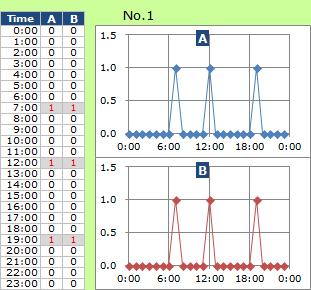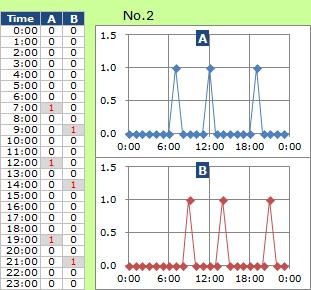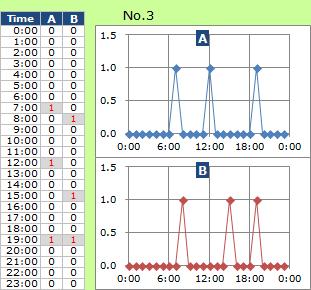
In No.1 case, correlation is strong. And we think "A and B have cause-effect relationship."
In Quantity Way of Making Hypothesis , Making Hypothesis by Correlation is a basic way. The success of this way is belong to the data.
In this page, there are two variables, "A" and "B" for every hours. "A" is thought that "It may be the cause side". "B" is the effect side.

In No.1 case, correlation is strong.
And we think "A and B have cause-effect relationship."
Same timing is the point.

In No.2 case, correlation is not strong.
But if we find that all time difference is same, two hours. We can calculate strong correlation after moving the line of one side data.

No.3 is similar to No.1 and No.2.
Correlation is not strong.
But we cannot use "moving the line".
We know that "Cause happens before effect". But if the line is not same, we cannot find the relationship by the calculation of correlation.
If we study cause-effect only by correlation, the problem will not be solved.
For example, in my approach for the data of this page, I think
"7:00, 12:00 and 19:00 of A are the time of eating?".
Then I think
"The cause is something that happnes in the eating time?".
If we want to solve the problem quickly, it is useful to study the meaning of the data.
If we can link data with right information of time difference, it's the best way. But if range in the time difference is far smaller than range in the whole time, output of analysis is same.
No.1 case is succeseful because timing of both cause and effect are in the same line. So if we make such data, it will be succeseful.
It is needed that we make lines not by the time but by other units. Reverse Time Aggregation is one of the this approach.
NEXT 

 Causal model of quantitative data
Causal model of quantitative data
